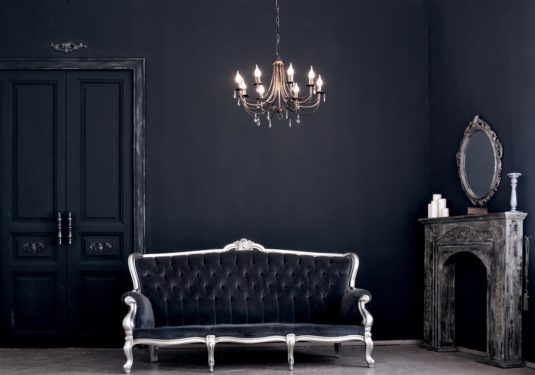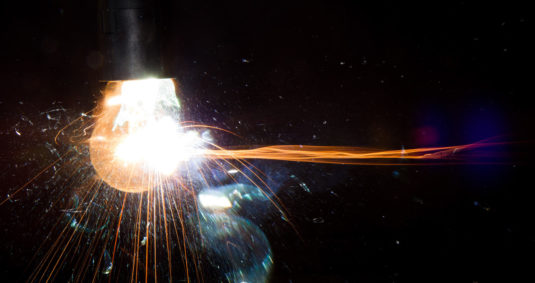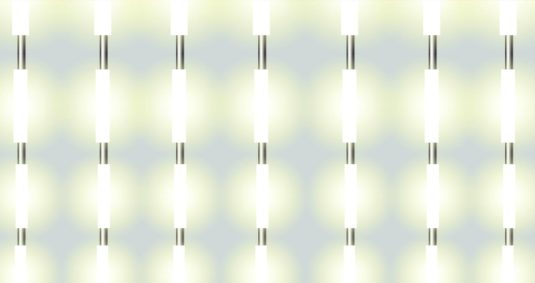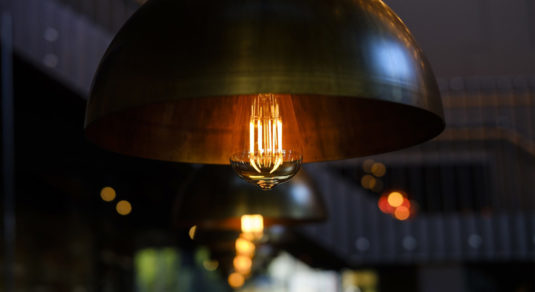Don’t Be Mis-LED – Overturning the Myths About LED
The many benefits of LED lighting are often obscured by myths and misunderstandings that have grown up around the technology. Here’s our guide for you to be sure that LED is the best choice.
With the recent EU ban on manufacture and sale of most types of halogen light, it’s tempting to binge-buy and hoard the ones still for sale but it’s actually better in all ways to change to LED now.
The myths that circulate around LED, particularly about it being inferior to halogen, can be easily laid to rest now to give you peace of mind in making your lighting choices.
People who currently have to budget for purchase of a large number of halogen bulbs, for example, to maintain quality in chandeliers and other multiple light source fittings, are not the only ones who will benefit from switching to LED.


Myth 1: Halogen is best


The EU ban, which came into effect on September 1st last year, is designed to drastically reduce energy consumption and associated carbon emissions.
The promotion of LED as alternative lighting is based on the fact that it is very energy efficient and high quality.
Halogen bulbs have an average life of between 2,000-4,000 hours – compare that with LEDs that last up to 50,000 hours.
The halogen bulb works by heating a fragile filament in a quartz container that is surrounded by halogen gas and tungsten vapour.
This makes the bulb extremely hot, and is also a highly inefficient way of producing light, with most of the energy dissipating as heat. Halogen bulbs do not work well in very cold conditions and contact with oil from the skin can cause them to explode or break down. By contrast, LEDs emit only a small amount of heat, being warm to touch even after many hours of use.
Halogen bulbs also emit a lot of infrared (IR) and ultraviolet (UV) radiation which is potentially damaging to fabrics and artwork. LEDs do not emit any harmful radiation.


Myth 2: LED light quality is poor
This misunderstanding comes from the very early days of the technology when the limited manufacturing capabilities meant that LED bulbs emitted a bluish and harsh hue. But that was a long time ago and both the design and construction processes have come a long way.
| Lumens | 220+ | 400+ | 700+ | 900+ | 1300+ |
|---|---|---|---|---|---|
| Halogen | 18W | 28W | 42W | 53W | 70W |
| LED | 4W | 6W | 10W | 13W | 18W |
| Lumens | 220+ | 400+ | 700+ | 900+ | 1300+ |
|---|---|---|---|---|---|
| Halogen | 18W | 28W | 42W | 53W | 70W |
| LED | 4W | 6W | 10W | 13W | 18W |
The brightness of incandescent lighting – including halogen – traditionally was measured in wattage, rather than the correct metric, lumens. You would simply buy a bulb with a higher wattage if you wanted more light, and vice versa. However, the more accurate measure of brightness is in “lumens” and this is the first of three measures you need to choose the best LED for your needs.
The table above is a good guide for you to choose the right lumens measure when you replace the old and inefficient halogen bulbs.
Useful Measures
As well as Lumens, two other measures you will benefit from are Colour Temperature (CCT) and Colour Rendering Index (CRI).
CCT is a measure in Kelvin (K) of the visual appearance of the light colour and it ranges from warm, orange light at 1500K to blue light at 10,000K. Generally the choice of 2700K or 3,000K provides a warm ambience while higher CCTs (4,000K+) ensure a cooler environment.
CRI scales from 0, which is effectively like mono TV to 100 and gauges the effectiveness of the bulb interpreting colour. LEDs with a CRI in the mid-80’s and above provide more natural tones while lower measures make things look dull and uninspiring.
Myth 3: LEDs are expensive
It’s true that the initial cost of LEDs is more than halogen and other light sources. But the fact is you are buying a robust and very efficient electrical component, part of the technology matrix that includes things like computers, mobile phones and TVs.
The chips at the heart of every LED mean that it uses a fraction of the electricity consumed by halogen and other bulbs, by producing light much more effectively, passing electrons through semi-conductive material.
LEDs also last 12-15 times longer than halogen and other lights while using only 25% of the energy, or even less with some models. And a good quality LED should last you for more than a decade with average domestic use in living rooms and kitchens, for example.


So, while the purchase cost is more than traditional bulbs, the view should be on the longer term. With average use, you should pay for the bulb with energy savings in around 12 months then go on saving for many more years, with no replacement costs to factor in.
Myth 4: LEDs cannot be dimmed


This misunderstanding has arisen because some LED models are not constructed for dimming and people have bought these lights expecting them to work with dimmer switches and transformers.
All quality LED brands will ensure that their products are clearly labelled as dimmable or non-dimmable. If you need help, call us on 0333 123 5464 for expert advice on dimming.
The I/O digital technology in LEDs means that they are either on or off. They can be dimmed by controlling them to switch on and off so rapidly that the eye cannot notice. With quality LEDs there will be no visible flicker.
It should be possible for you to use your existing dimmer switches. And there are models, like Philips SceneSwitch, that can be dimmed in three steps using your basic light switch.
Myth 5: LEDs don’t last
This myth has grown up largely around the irritating fact that a number of poorly manufactured LEDs, with ineffective quality control, have been on the UK market. These shoddy LEDs are very cheap, with poor light quality and high failure rates. some of them can be dangerous.
It’s also true that some LED bulbs have not been around long enough for annualised testing. But the best brands do ensure the most extensive testing and the LED lighting industry has been around for a long time – since the early 1960s – so there is wealth of research data to back claims on lifespan.
In fact, some of the earlier LED lights have exceeded longevity targets and with the continued improvements in design and engineering, the long-life future for LEDs is secure.
Myth 6: LEDs change so it’s worth waiting


Like most modern technology, LEDs are evolving but the sector is mature now, with high quality lights from trusted brands available at good prices.
Waiting to make the change is like putting off buying a new mobile phone or TV because the “next big thing” is just around the corner.
And while prices will continue to drop, the major falls have already happened and LED bulbs, that a few years ago were very pricey compared with old incandescent lights, are now competitively costed.
Delaying purchase means missing out on big and ongoing energy savings.
Myth 7: LEDs are harmful to health
Recent research from the European Commission has given LED lighting a clean bill of health and quality models will not cause any problems by flickering. LED lights are not a hazard for your eyesight, having a similar intensity to halogen and other light models.
Conclusion
Well-manufactured LEDs from trusted brands are a boon for homes, businesses and other organisations. The myths around the technology are easily dispelled and the time to invest in these energy-saving and carbon-reducing products is now.
They are safe, ultra-efficient, versatile and with excellent quality of light. Browse our online range or call us on 0333 123 5464. Find out more about the halogen bulb ban here.